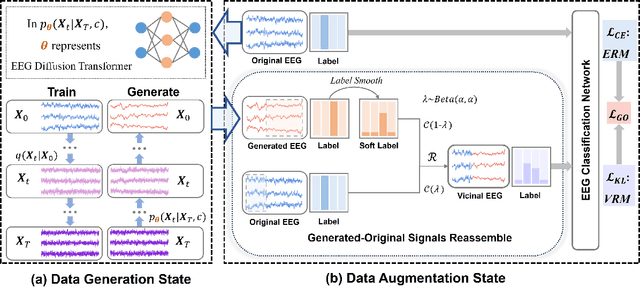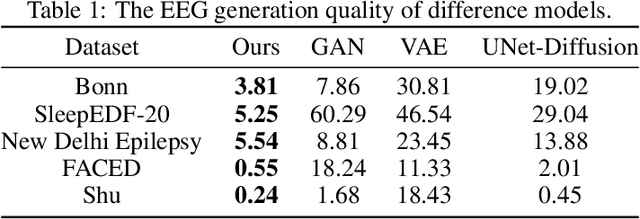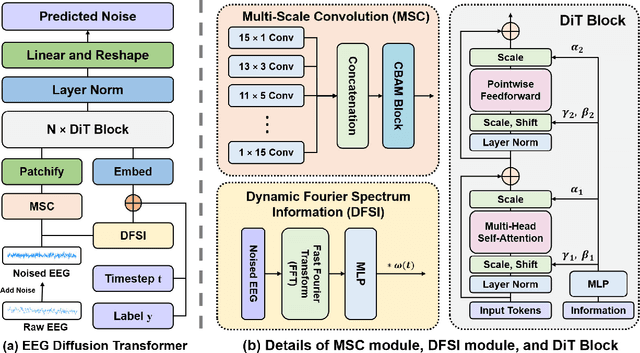Mingzhi Chen
Federated Learning for Medical Image Classification: A Comprehensive Benchmark
Apr 07, 2025Abstract:The federated learning paradigm is wellsuited for the field of medical image analysis, as it can effectively cope with machine learning on isolated multicenter data while protecting the privacy of participating parties. However, current research on optimization algorithms in federated learning often focuses on limited datasets and scenarios, primarily centered around natural images, with insufficient comparative experiments in medical contexts. In this work, we conduct a comprehensive evaluation of several state-of-the-art federated learning algorithms in the context of medical imaging. We conduct a fair comparison of classification models trained using various federated learning algorithms across multiple medical imaging datasets. Additionally, we evaluate system performance metrics, such as communication cost and computational efficiency, while considering different federated learning architectures. Our findings show that medical imaging datasets pose substantial challenges for current federated learning optimization algorithms. No single algorithm consistently delivers optimal performance across all medical federated learning scenarios, and many optimization algorithms may underperform when applied to these datasets. Our experiments provide a benchmark and guidance for future research and application of federated learning in medical imaging contexts. Furthermore, we propose an efficient and robust method that combines generative techniques using denoising diffusion probabilistic models with label smoothing to augment datasets, widely enhancing the performance of federated learning on classification tasks across various medical imaging datasets. Our code will be released on GitHub, offering a reliable and comprehensive benchmark for future federated learning studies in medical imaging.
MIGA: Mutual Information-Guided Attack on Denoising Models for Semantic Manipulation
Mar 11, 2025Abstract:Deep learning-based denoising models have been widely employed in vision tasks, functioning as filters to eliminate noise while retaining crucial semantic information. Additionally, they play a vital role in defending against adversarial perturbations that threaten downstream tasks. However, these models can be intrinsically susceptible to adversarial attacks due to their dependence on specific noise assumptions. Existing attacks on denoising models mainly aim at deteriorating visual clarity while neglecting semantic manipulation, rendering them either easily detectable or limited in effectiveness. In this paper, we propose Mutual Information-Guided Attack (MIGA), the first method designed to directly attack deep denoising models by strategically disrupting their ability to preserve semantic content via adversarial perturbations. By minimizing the mutual information between the original and denoised images, a measure of semantic similarity. MIGA forces the denoiser to produce perceptually clean yet semantically altered outputs. While these images appear visually plausible, they encode systematically distorted semantics, revealing a fundamental vulnerability in denoising models. These distortions persist in denoised outputs and can be quantitatively assessed through downstream task performance. We propose new evaluation metrics and systematically assess MIGA on four denoising models across five datasets, demonstrating its consistent effectiveness in disrupting semantic fidelity. Our findings suggest that denoising models are not always robust and can introduce security risks in real-world applications.
Improving EEG Classification Through Randomly Reassembling Original and Generated Data with Transformer-based Diffusion Models
Jul 20, 2024



Abstract:Electroencephalogram (EEG) classification has been widely used in various medical and engineering applications, where it is important for understanding brain function, diagnosing diseases, and assessing mental health conditions. However, the scarcity of EEG data severely restricts the performance of EEG classification networks, and generative model-based data augmentation methods emerging as potential solutions to overcome this challenge. There are two problems with existing such methods: (1) The quality of the generated EEG signals is not high. (2) The enhancement of EEG classification networks is not effective. In this paper, we propose a Transformer-based denoising diffusion probabilistic model and a generated data-based data augmentation method to address the above two problems. For the characteristics of EEG signals, we propose a constant-factor scaling method to preprocess the signals, which reduces the loss of information. We incorporated Multi-Scale Convolution and Dynamic Fourier Spectrum Information modules into the model, improving the stability of the training process and the quality of the generated data. The proposed augmentation method randomly reassemble the generated data with original data in the time-domain to obtain vicinal data, which improves the model performance by minimizing the empirical risk and the vicinal risk. We experiment the proposed augmentation method on five EEG datasets for four tasks and observe significant accuracy performance improvements: 14.00% on the Bonn dataset; 25.83% on the New Delhi epilepsy dataset; 4.98% on the SleepEDF-20 dataset; 9.42% on the FACED dataset; 2.5% on the Shu dataset. We intend to make the code of our method publicly accessible shortly
Spectral Clustering with Smooth Tiny Clusters
Sep 10, 2020Abstract:Spectral clustering is one of the most prominent clustering approaches. The distance-based similarity is the most widely used method for spectral clustering. However, people have already noticed that this is not suitable for multi-scale data, as the distance varies a lot for clusters with different densities. State of the art(ROSC and CAST ) addresses this limitation by taking the reachability similarity of objects into account. However, we observe that in real-world scenarios, data in the same cluster tend to present in a smooth manner, and previous algorithms never take this into account. Based on this observation, we propose a novel clustering algorithm, which con-siders the smoothness of data for the first time. We first divide objects into a great many tiny clusters. Our key idea is to cluster tiny clusters, whose centers constitute smooth graphs. Theoretical analysis and experimental results show that our clustering algorithm significantly outperforms state of the art. Although in this paper, we singly focus on multi-scale situations, the idea of data smoothness can certainly be extended to any clustering algorithms
 Add to Chrome
Add to Chrome Add to Firefox
Add to Firefox Add to Edge
Add to Edge